Heel Pain
What is Heel Pain?
Heel pain is a common complaint that can affect people of all ages. Fractures and sprains are two types of injuries that can cause heel pain. Additionally, a few medical conditions including reactive arthritis and bursitis may cause it. The reason could determine the course of treatment.
There are almost 100 tendons, 33 joints, and 26 bones in each foot and ankle. The biggest bone in your foot is the heel.
Heel pain can occur if you misuse or damage your heel. This may be minor or impairing. If basic home remedies don’t relieve the pain, you might need to see a physician or podiatrist to determine the problem.
Causes of Heel Pain
Common Causes
Any injury or infection to the calcaneus, the heel bone, or its surrounding structures is typically the cause of heel pain. Another possible cause is damage to the nerves supplying the foot and ankle.
Under the ankle at the rear of the foot is the heel bone. The heel, working together with the talus, a tiny bone, and connective tissues, facilitates side-to-side movement and balance of the rear foot.
The two most common sources of heel pain are the connective tissues connecting the heel to the bottom of the calf muscle (called Achilles tendonitis) or the base of the foot (called plantar fasciitis).
Planter Fasciitis
The band of connective tissue that creates the arch of your foot and joins your heel bone to the base of your toes becomes inflamed when you have plantar fasciitis. When weight is applied to the heel after a period of rest, it produces a throbbing or stabbing pain on the bottom of the heel.
Long periods of standing can also cause plantar fasciitis pain, which is typically greater during the first few steps of the morning.
Risk factors are among them:
- Increased body mass index (BMI), a popular but unreliable health measure for determining weight and obesity
- Jobs or pursuits involving a lot of weight-bearing
- Your foot’s dimensions and form, including any problems with the arch
- When bone spurs are present
Because the illness is a degenerative process that results in subsequent inflammation, it is also known as plantar fasciopathy. Usually, it just affects one foot, leaving the other free to support your weight.
Long-term plantar fasciitis may result in the formation of a heel spur, which is a bony protrusion where the fascia attaches to the heel bone. Heel spur pain is frequently characterized as “cutting” or “stabbing.” Rarely, the plantar fascia may rupture or tear, resulting in severe pain, bruising, and edema.
Achilles Tendonitis
The big, cord-like tendon that connects the back of the heel bone to the calf muscle is called the Achilles tendon, and Achilles tendonitis is inflammation of that tendon.
The tendon right above the heel becomes taut or burns when someone has Achilles tendinitis. Mild edema and morning calf and heel pain are also frequent.
The most common cause of Achilles tendonitis is overuse, which can result from long-distance jogging. Achilles tendonitis can also be caused by wearing shoes that are too small, not warming up your calves before exercising, or having arthritis.
Ruptures of the Achilles tendon are rare. This usually happens when the foot quickly pivots during intense physical exercise (such as tennis or basketball). In addition to excruciating heel pain, some claim to have heard a “popping” or “snapping” sound as a result of tendon rips.
Severe Disease
For children and teenagers, the most prevalent cause of heel pain is severe disease. Known as calcaneal apophysitis, it usually affects active youngsters, such as running or leaping, between the ages of 8 and 12. In times of growth spurt, it might get worse.
The injury, which is typically caused by playing sports like basketball or soccer, involves bone inflammation or edema. Conservative care, which includes rest, ice, and painkillers, is typically effective.
Peroneal Tendonitis
A typical source of pain on the outside of the heel, where the tendons connect the calf muscles to the foot, is conditions affecting the peroneal tendon. Tendonitis can result from these tendons rupturing, dislocating, or stretching.
Peroneal tendinitis is frequently caused by overuse injuries. Pain, tingling, and numbness are among the symptoms that can result from damage to the peroneal nerve. With this injury, some persons have a foot drop, which can cause weakness and abnormalities in gait when walking.
Uncommon Causes
There exist alternative, less frequent reasons for heel pain, varying in intensity from minor to incapacitating:
Bruise Heel Pad
Sharp pain across the bottom of the heel is the result of a bruised heel pad. If you step forcefully on a stone or land hard on your heel, you could sustain this relatively small injury. Excessive weight-bearing exercises might also cause it.
Tarsal Tunnel Syndrome
A major nerve at the back of the foot called the posterior tibial nerve becomes pinched in people with tarsal tunnel syndrome. Tarsal tunnel syndrome can result in painful or scorching heels; however, the pain is typically felt on the ball of the foot and near the toes.
Similar to carpal tunnel syndrome of the wrist, tarsal tunnel syndrome also causes tingling and numbness along with pain that gets worse at night.
Stress Fractures
Stress fractures of the heel are frequently experienced by athletes (like long-distance runners) who overtrain or increase the intensity of their training in a short amount of time. A crack in the heel bone eventually results from repeated stress.
Severe heel pain from a stress fracture gets worse with movement and gets better with rest. At the fracture site, one may also experience soreness and edema.
Fat Pad Atrophy
The cushioning fat in the heel of older persons may degrade and shrink over time. This is called atrophy of the fat pads, and it hurts when the heel wears down. Although it has a separate origin, the condition can also result from steroid therapy for co-occurring plantar fasciitis.
Another similar condition is called heel pad syndrome when repeated trauma thins the fat pad. Obese individuals and marathon runners are more vulnerable to this. A sharp, deep ache in the center of the heel is the result of heel pad syndrome, and it worsens as you bear weight.
Haglund’s Syndrome
Haglund’s syndrome, commonly called “pump bump,” is a condition where a heel spur develops behind the heel. This usually happens to persons who wear shoes that are too tight or too rigid. Redness, warmth, and swelling could occur alongside limping due to the pain.
Bursitis is a possible ailment that arises from irritation of the soft tissue surrounding the bony bump. The inflammation of the bursa, a fluid-filled sac located between joints, is known as bursitis. It can happen where the Achilles tendon joins to the back of the heel bone (retrocalcaneal bursitis) or at the top and side of the tendon (calcaneal bursitis).
Sinus Tarsi Syndrome
The area on the exterior of the foot between the ankle and heel bones is called the sinus tarsi, sometimes known as “the eye of the foot.” Despite its modest size, this area is home to several ligaments as well as fatty tissues, tendons, nerves, and blood vessels.
Sinus tarsi syndrome is a condition that causes ongoing pain in the front and sides of the ankle and is usually the result of acute injury. When engaging in weight-bearing activities, the heel pain often gets worse. There may also be “looseness” in the ankles and difficulty walking on uneven surfaces.
Rare Causes of Heel Pain
Heel pain can occasionally be caused by:
- Piezogenic papules: Usually caused by connective tissue disorders such as Ehlers-Danlos syndrome, these painful lumps appear when fat protrudes from the heel capsule.
- Heel bone infection: This type of osteomyelitis, or inflammation of the bone, is characterized by persistent heel pain, frequently accompanied by fever and exhaustion. Individuals with diabetes mellitus are more vulnerable.
- Heel bone tumors: A deep, dull heel pain that gets worse at night can be caused by these usually benign (non-cancerous) growths.
Symptoms of Heel Pain
Depending on the cause of your pain and the area of your heel that is injured, your heel pain symptoms may change. Additionally, each person’s experience with pain may not be the same. Some may experience severe or stabbing sensations, while others may only experience a dull, throbbing ache. The pain may be continuous, intermittent, or more intense when walking, standing, or at particular times of the day, such as in the morning.
If you believe you are suffering from heel pain, watch out for the following signs:
- Redness or swelling
- A bulge or hump on the heel’s underside
- Tightness or stiffness, particularly after inactivity
- Pain that radiates, or extends, to other parts of the foot or leg from the heel
- Sensitivity or tingling
- Standing, moving, or running with difficulty
- Increasing pain with exercise or extended standing
Diagnosis
A medical history and physical examination are sufficient to diagnose the majority of heel problems. Blood testing and imaging examinations may be required in specific situations.
Medical History
Often, the most important indicator in the diagnosis of heel pain is a thorough medical history.
Some such questions are:
- Where exactly are you feeling pain?
- When did you first feel pain?
- How does the ache feel in your body?
- Does putting weight on it cause you pain?
- Does the pain vary in intensity throughout the day or night?
- Can you remember anything you did that might have harmed your foot?
- Do you have any more symptoms?
Physical Examination
Your foot, ankle, and heel will be examined and palpated by the medical professional during the physical examination to look for any abnormalities, bruising, rash, or pain. Additionally, they might move (manipulate) your ankle and foot to determine whether and where it hurts.
The healthcare professional could also choose to assess your gait by looking at the location and angle of your heel, ankle, and foot.
Blood Tests
Although your doctor may order blood tests if they suspect (or wish to rule out) a specific condition, they may order one or more even though they are not frequently ordered for the diagnosis of heel pain.
Blood testing could consist of:
- Complete blood count (CBC): This blood test can assist in identifying infection-related symptoms.
- C-reactive protein (CRP): The body’s overall level of inflammation can be determined by this blood test.
- Erythrocyte sedimentation rate (ESR): blood test is a useful tool for identifying systemic inflammation.
Imaging Studies
To diagnose diseases including a stress fracture, heel spur, bone tumor, or Haglund’s syndrome, an X-ray of the heel may be requested. A magnetic resonance imaging (MRI) scan is a less prevalent diagnostic tool for soft tissue injuries and infections.
Differential Diagnoses
Although it makes sense to think that your heel would be the cause of your pain, this isn’t always the case. Other disorders can resemble Achilles tendinitis, plantar fasciitis, and other heel pain reasons.
Among them are:
- Radiculopathy: This happens when pain in one area of the body is referred to another by a pinched spinal nerve. The pain may radiate down the calf muscle and into the heel when the lower back is affected.
- Peripheral neuropathy: Damage to the nerves supplying the limbs can result in peripheral neuropathy, which is characterized by burning or pins-and-needles sensations. Diabetes, alcoholism, and certain drugs are among the causes.
- Skin issues: Plantar warts, and bacterial and fungal skin diseases, including athlete’s foot, can also result in heel pain (like cellulitis).
Treatment
Fortunately, several treatments can improve heel pain. Depending on what is causing your pain and how bad your symptoms are, there are many approaches to treating heel pain.
Non-Surgical
The majority of the time, conservative measures are sufficient to reduce heel pain and encourage healing. Your medical professional might advise:
- Taking breaks from high-impact exercises and resting your body
- Try engaging in low-impact sports like cycling or swimming.
- Several times a day, apply cold packs to your heels for 20 minutes at a time to reduce inflammation.
- Using over-the-counter analgesics, such as Aleve (naproxen) or Advil (ibuprofen), which are non-steroidal anti-inflammatory medicines (NSAIDs)
- Putting on over-the-counter orthotics in your shoes, such as heel cups or pads
- Purchasing shoes with adequate cushioning and arch support
- Stretching the plantar fascia or Achilles tendon while you sleep at night can help to relieve stiffness.
- Applying kinesiology tape (KT) to your foot to support your heels’ arches
Physical Therapy:
Stretches and exercises like calf raises and sliding an ice-filled plastic bottle under the foot are specifically made to relax the tissues that surround the heel bone. These are part of a physical therapy treatment plan and are done in the morning and the evening.
You can be recommended to a physical therapist for the Alfredson protocol, a type of treatment if you have Achilles tendinitis. This entails using eccentric activities to strengthen the Achilles tendon while stretching the supporting muscles.
Footwear Modification:
Various foot supports may be recommended by your healthcare practitioner, depending on the reason behind your heel pain.
If you have plantar fasciitis, you can keep your foot straight at night by wearing a splint. It can also be beneficial to wear supportive, comfortable shoes with appropriate arch and heel support.
Shoe orthotics or heel wedges can stabilize the ankle and reduce pain if you have Achilles tendinitis.
Your doctor could advise you to change the heel height of your shoes if you have Haglund’s syndrome.
Surgical
Surgery is usually only advised for heel pain that has not responded to six to twelve months of conservative treatment.
A plantar fascia release is a surgical procedure that can be done to remove the plantar fascia from the heel bone in patients with plantar fasciitis. To treat plantar fasciitis, a different surgery known as a gastrocnemius resection surgically lengthens the calf muscle.
Complementary and Alternative Medicine (CAM)
Some complementary and alternative medicine (CAM) therapies may relieve heel pain, but they should not be used in place of traditional medical care. Among them are:
- High-energy sound waves: High-energy sound waves are used in shockwave therapy to promote tissue healing and cure persistent heel pain. For best outcomes, it might be required to undergo repeated treatments.
- Acupuncture: Acupuncture is a type of Traditional Chinese Medicine (TCM) in which tiny needles are inserted into the body at predetermined locations to promote healing and reduce pain. Acupuncture treatment can greatly reduce heel pain in one to two months.
- Platelet-rich plasma therapy: To promote tissue healing and lessen pain, concentrated platelets from your blood are injected into the injured heel. This procedure is known as platelet-rich plasma therapy or PRP therapy.
Prevention
There are steps you can take to prevent injury to your heel and supporting tissues, regardless of whether you have ever had heel pain.
- Keep your weight in check: Being overweight puts more strain on your lower limbs, especially your heels.
- Put on appropriate footwear: For many forms of heel pain, wearing appropriate, well-fitting shoes with sufficient support and cushioning is essential.
- Warm up before you do anything: This is particularly important if you’re playing a strenuous activity or going for a long run.
Never ignore your body’s signals; pain is never “normal.” If you have unexplained heel pain, take a step back and see if it gets better. Consult a medical professional if it worsens or recurs.
Living with Heel Pain
Even while heel pain usually goes away with rest and the right care, chronic heel pain that lasts for more than a few months can make daily living difficult.
The following are some methods for handling persistent pain:
- Follow your prescribed course of treatment: Heel pain can be managed and the risk of problems reduced by following your healthcare provider’s recommendations for self-care practices, medication, physical therapy, and lifestyle modifications.
- Try different pain-management strategies: Try using several methods for managing your pain and relaxing, like breathing exercises, meditation, and visualization techniques.
- Keep up the level of activity: For minimal heel pain, try low-impact exercises like stretching, cycling, or swimming to help you stay in shape and prevent stiffness.
- Prioritize rest and recovery: Pay attention to your body and take pauses during the day as necessary.
- Stretch: Include stretching exercises for your feet and ankles in your daily regimen to help keep pain from getting worse and to increase your range of motion.
Summary
Heel pain is a prevalent issue that can impact individuals of all age groups. The most frequent cause of heel pain is plantar fasciitis, which is inflammation of the plantar fascia, a band of tissue that runs along the bottom of the foot. This inflammation can cause sharp pain, especially when taking the first steps in the morning or after getting up from a seated position. Other causes of heel pain include Achilles tendinitis, which is inflammation of the tendon that connects the calf muscle to the heel bone, and bursitis, which is inflammation of the fluid-filled sacs that cushion the bones, tendons, and muscles around the heel.
Heel pain can be caused by a variety of factors, including overuse, improper footwear, and obesity. Treatment for heel pain typically involves rest, ice, and over-the-counter pain medication. In rare cases, corticosteroid injections or physical therapy may be required. If you are experiencing heel pain, it is important to see a doctor to get a diagnosis and discuss treatment options.
Early diagnosis and treatment of heel pain can help prevent the condition from worsening and can lead to a faster recovery. If you are experiencing heel pain, there are some things you can do to help relieve the pain and improve your condition. These include resting your foot, icing the affected area, and wearing supportive shoes. You may also want to try stretching exercises or physical therapy.
FAQs
What is the most common cause of heel pain?
The most common cause of heel pain is plantar fasciitis, which is inflammation of the plantar fascia, the ligament that supports the arch of your foot.
What are the symptoms of heel pain?
Heel pain is often described as a sharp or stabbing pain in the bottom of the heel, especially when taking the first steps in the morning or after getting up from sitting.
What causes heel pain?
Heel pain can be caused by overuse, improper footwear, obesity, tight calf muscles, or certain activities that put a lot of stress on the heel.
How can I treat heel pain at home?
Rest, ice application, and over-the-counter pain medication can help relieve heel pain. Stretching exercises and wearing supportive shoes can also be beneficial.
When should I see a doctor for heel pain?
If your heel pain is severe or doesn’t improve with home treatment after a few weeks, you should see a doctor to get a diagnosis and discuss treatment options.
Are there any long-term complications of heel pain?
Untreated heel pain can lead to chronic pain and difficulty walking.
How can I prevent heel pain?
Maintaining a healthy weight, wearing supportive shoes, and stretching your calf muscles regularly can help prevent heel pain.
References
- Professional, C. C. M. (n.d.-c). Heel Pain. Cleveland Clinic. https://my.clevelandclinic.org/health/articles/10060-heel-pain
- Cluett, J. (2024b, April 25). What Causes Heel Pain and How Is It Treated? Verywell Health. https://www.verywellhealth.com/heel-pain-information-and-causes-2549378#toc-diagnosing-the-cause-of-heel-pain
- Burke, D. (2024b, February 7). What Causes Heel Pain? Healthline. https://www.healthline.com/health/heel-pain#prevention
- Curtis, L. (2024b, January 23). What Causes Heel Pain—And How Can You Find Relief? Health. https://www.health.com/heel-pain-8423065

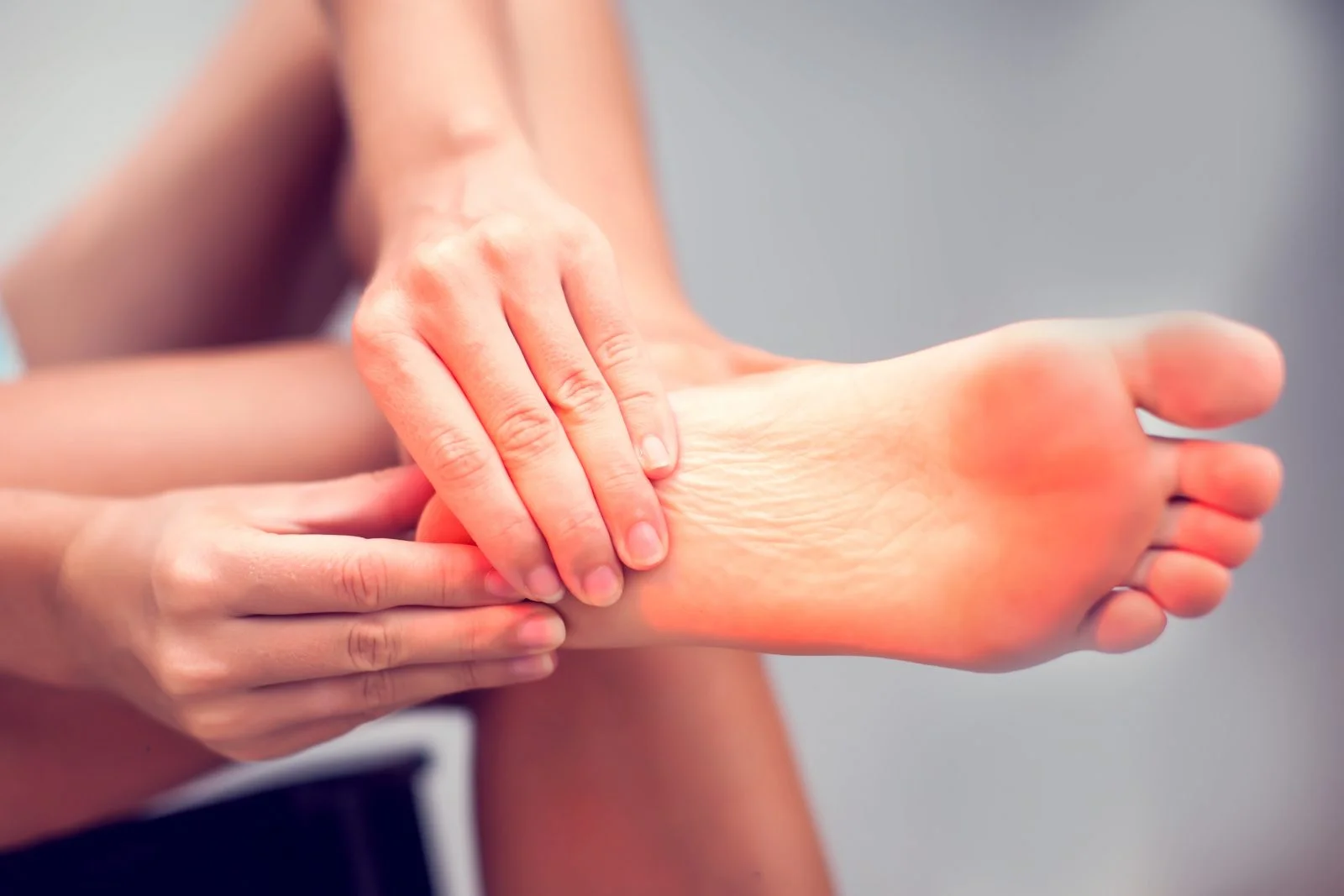

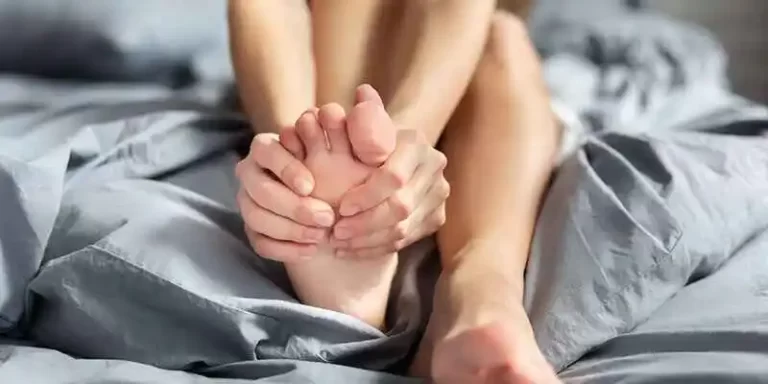
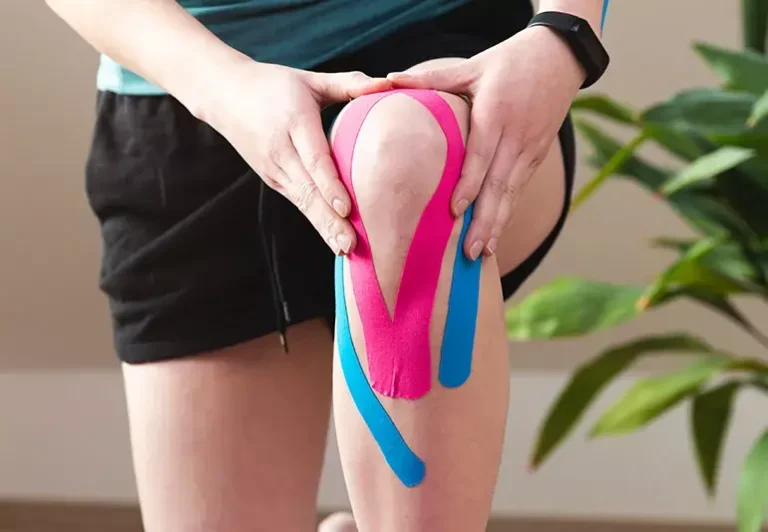
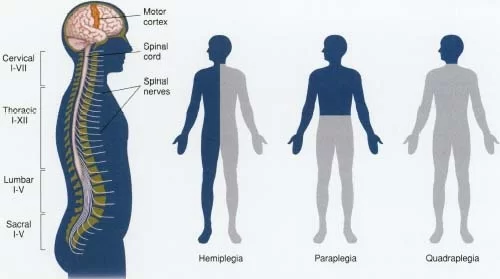
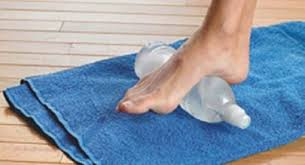
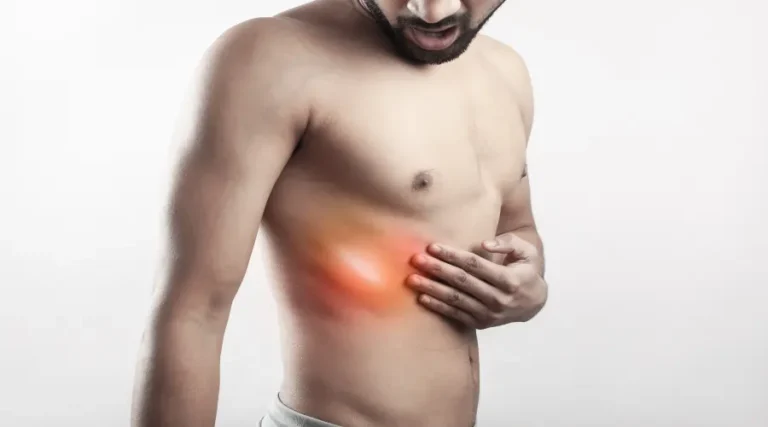
12 Comments